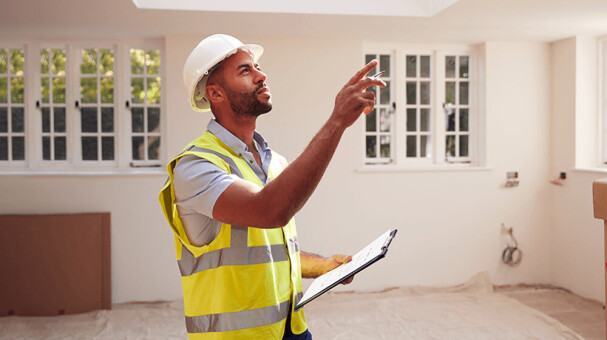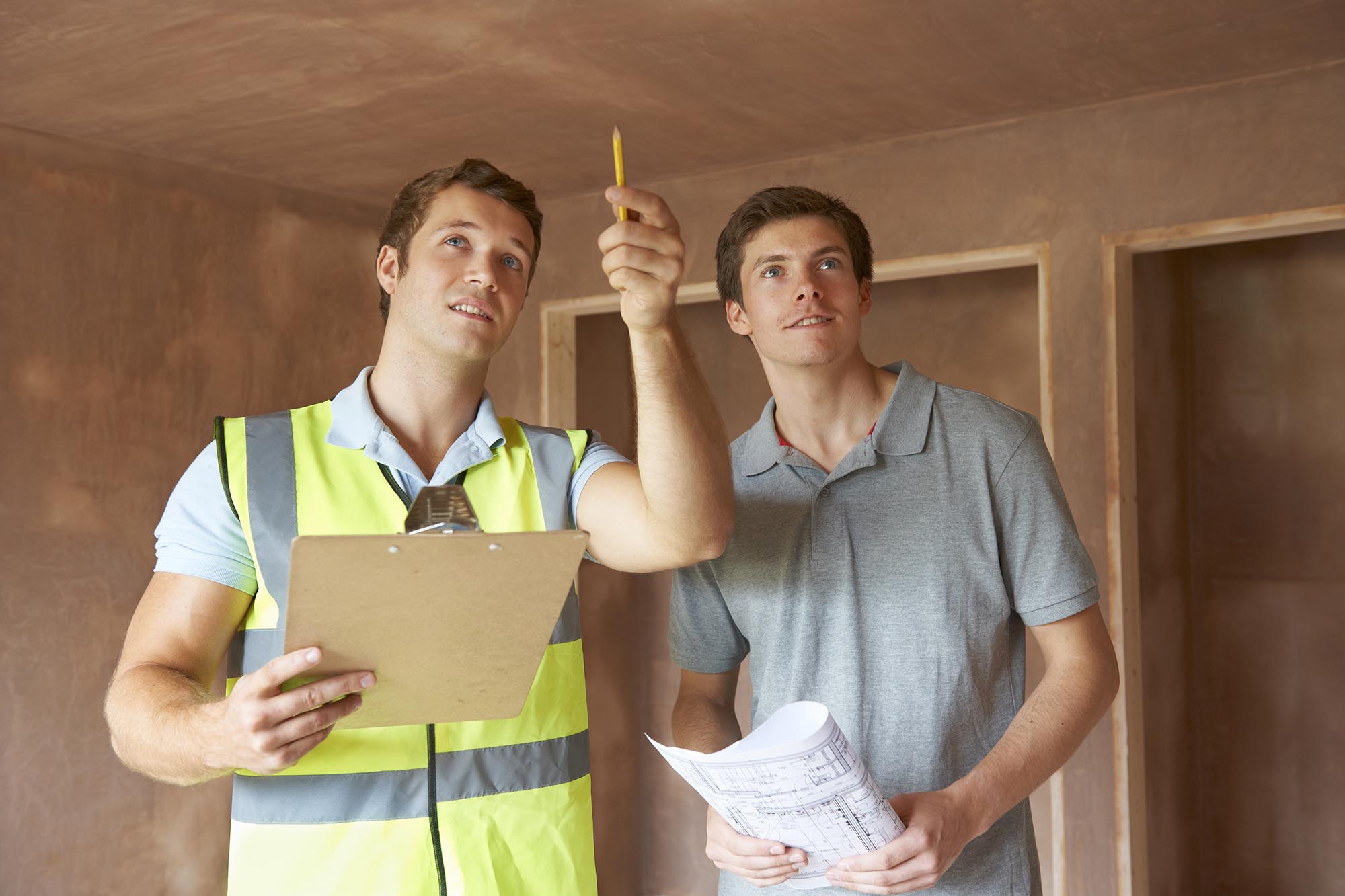Best home inspections for apartments, duplexes, and single-family homes
Best home inspections for apartments, duplexes, and single-family homes
Blog Article
What Is Consisted of in a Thorough Residential Or Commercial Property Evaluation Refine?
A thorough building assessment process is crucial for guarding financial investments and ensuring safety and security. It incorporates a careful assessment of architectural integrity, electrical systems, pipes, and cooling and heating systems, to name a few essential parts. Inspectors perform a detailed examination of both exterior and indoor aspects, determining possible dangers and compliance with market standards. The resulting report works as a crucial resource for current proprietors and potential customers alike. The specifics of what assessors focus on, and the ramifications of their findings, can considerably affect decision-making. What, after that, are the most crucial facets that can make or break a building analysis?
Review of Residential Or Commercial Property Assessment

The evaluation encompasses numerous vital locations, including the exterior and indoor aspects, systems such as plumbing and electric, and any visible structural components (Phoenix property inspections). Throughout the procedure, the assessor records the condition of these aspects, seeking indicators of wear, damage, or potential dangers
A detailed home evaluation not only aids prospective buyers make informed choices but also aids current proprietors in recognizing needed repair services or upkeep jobs. By supplying a thorough record of findings, the examination enables stakeholders to prioritize problems that may require immediate attention or could affect future investment.
Furthermore, an efficient assessment procedure abides by established industry standards and standards, making certain a regular and trustworthy analysis. On the whole, the home examination procedure is an important tool in realty deals, advertising transparency and protecting both buyer and seller passions.
Structural Examination

During the examination, experts analyze numerous elements, including the foundation, framing, walls, and roofing systems. They look for indicators of clearing up or shifting, such as fractures in wall surfaces or unequal floorings, which can indicate underlying issues. The evaluation also involves checking out the top quality of building and construction products and techniques used, making certain conformity with structure codes and requirements.
In addition, assessors may look for indicators of dampness intrusion, which can result in timber rot and mold, more jeopardizing structural honesty. They also evaluate load-bearing components to ensure they can properly support the weight of the structure and its contents.
Ultimately, a thorough architectural evaluation gives important understandings for prospective customers and home owners, enabling them to make informed choices concerning home financial investments and required maintenance. By recognizing structural problems early, owners can address problems proactively, preserving the lasting worth and security of the residential or commercial property.
Electric System Assessment
An effective electrical system analysis is crucial in the residential property assessment process, as it examines the safety, performance, and compliance of a structure's electrical facilities - Home inspections. This analysis commonly incorporates a thorough examination of the major electrical panel, circuit breakers, and electrical wiring systems. Assessors search for signs of wear, corrosion, or damages that might jeopardize security
The evaluation consists of testing for ample grounding and bonding, guaranteeing that the electric system is correctly attached to prevent electrical shock or fire risks. Examiners likewise evaluate the capacity of the electric system to take care of the current load, identifying any type of prospective overloading concerns that could result in failures or interruptions.
Additionally, the assessment checks for the visibility of GFCI (Ground Mistake Circuit Interrupter) and AFCI (Arc Fault Circuit Interrupter) devices in suitable places, which are essential for protecting against electric shocks and stopping fires. Compliance with regional structure codes and laws is likewise verified to guarantee that any kind of installations or alterations fulfill safety requirements.

Pipes and A/c Checks
Complying with the electric system analysis, the pipes and HVAC checks are indispensable parts of the building evaluation process. These evaluations make certain that the essential systems of the property are operating properly and safely, therefore securing the financial investment and wellness of the passengers.
During pipes assessments, professionals examine the problem of pipes, fixtures, and drain systems. They check for leakages, rust, and any type of signs of water damages that can suggest bigger problems. The effectiveness of water heating units is additionally examined to ensure they meet current requirements and supply ample hot water supply.
Assessors will assess the functional effectiveness of these systems, making certain that they keep a comfortable indoor setting. Additionally, the examiner will certainly look for any indications of wear or potential safety and security hazards, such as carbon monoxide leakages in home heating systems.
Outside and Inside Inspections
Exterior and indoor inspections are important facets of the residential or commercial property inspection procedure, check this giving a comprehensive summary of a residential or commercial property's condition. The exterior evaluation includes examining architectural components such as the roofing system, house siding, structure, and home windows.
The interior assessment concentrates on the problem of living areas, consisting of wall surfaces, floor covering, and ceilings. Assessors examine the performance of devices, home windows, and doors, while also checking for indications of dampness or architectural issues. Electrical systems, pipes components, and a/c devices are inspected to ensure they are see here now in functioning order, compliant with building ordinance, and complimentary from safety and security risks.
Both assessments finish in a comprehensive report that highlights vital searchings for and suggestions for repairs or further evaluations. This twin method guarantees that possible buyers or proprietors are totally educated concerning the residential or commercial property's strengths and weak points, enabling them to make knowledgeable decisions.
Conclusion
Finally, an extensive residential property inspection process incorporates a substantial evaluation of architectural integrity, electric systems, plumbing, and HVAC devices, alongside detailed outside and interior evaluations - Commercial property inspections. By methodically analyzing each crucial component, potential security dangers and compliance with industry requirements and local structure codes can be identified. The resultant detailed record acts as a crucial source, equipping home owners and purchasers to make educated choices concerning residential or commercial property investments and maintenance, eventually boosting security and worth
A thorough property inspection process is essential for securing investments and read the full info here making sure safety.Throughout the inspection, professionals examine numerous elements, including the structure, framework, wall surfaces, and roof systems.An effective electric system assessment is crucial in the residential property evaluation procedure, as it reviews the safety, functionality, and conformity of a building's electric framework.Outside and interior examinations are critical elements of the residential property examination procedure, providing a detailed summary of a residential or commercial property's problem.In final thought, a detailed residential property inspection process includes a considerable evaluation of structural integrity, electrical systems, plumbing, and Heating and cooling systems, along with thorough exterior and interior evaluations.
Report this page